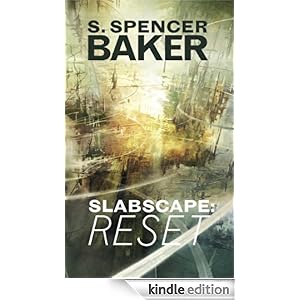“Take the most sophisticated A.I. designed mind that has ever existed, encase it in over fifty million cubic kilometres of diamond nano-rods and send it off on a twenty-thousand-year odyssey towards the centre of the galaxy. Then screw it all up by allowing thirty-two million humans to go along for the ride...”
Slabscape: Reset is not my usual type of read, but I was very impressed with the level of imaginative realism in this sci-fi outing. The plot and characters are very believable, humour was weaved throughout the plot and it reminded me a little of the Red Dwarf universe. There were times when the pace of the book slowed but overall the book was well paced, and as such I was left wanting more at the end.
I liked the idea of an online resource providing additional information and value to the book, and whilst I personally didn’t find it all that useful, I can see many readers enjoying the material provided there. The wiki will probably become more useful and interesting as the series progresses.
Overall Slabscape is a very humorous and believable sci-fi outing. Drago as a character is easily the most thought-out and well written character I have come across this year.
The book is available from Amazon UK for £7.69 and from Amazon US
for £7.69 and from Amazon US for $12.35. It is a shame that currently this book does not appear to be available in non-Kindle formats, although the paperback version can be obtained from Amazon.
for $12.35. It is a shame that currently this book does not appear to be available in non-Kindle formats, although the paperback version can be obtained from Amazon.
The book is available from Amazon UK
[A review copy was provided by the author]





